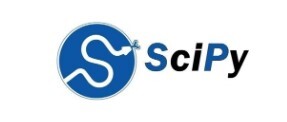
 Data Structure
Data Structure Networking
Networking RDBMS
RDBMS Operating System
Operating System Java
Java MS Excel
MS Excel iOS
iOS HTML
HTML CSS
CSS Android
Android Python
Python C Programming
C Programming C++
C++ C#
C# MongoDB
MongoDB MySQL
MySQL Javascript
Javascript PHP
PHP
- Selected Reading
- UPSC IAS Exams Notes
- Developer's Best Practices
- Questions and Answers
- Effective Resume Writing
- HR Interview Questions
- Computer Glossary
- Who is Who
What are the different types of Python data analysis libraries used?
Without question, Python is among the first things employers look for in a data scientist's skill set. It has quickly established itself as the standard language in the data science industry. It has repeatedly come first in worldwide data science polls, and its ubiquity is only growing!
But what distinguishes Python for data scientists so greatly?
Like our physical body is made up of several organs for various purposes and a heart to keep them all functioning, the core of Python gives us access to an easy-to-code, object-oriented, high-level language (the heart). For each task category, such as math, data mining, data exploration, and visualisation, we have a specific library (the organs).
Matplotlib

This is without a doubt the best Python library available. Making stories from the data Matplotlib has displayed is possible. Another SciPy Stack library that plots 2D graphs is Matplotlib.
when to use? Graphs can be included into programmes using an object-oriented API provided by the Python charting library Matplotlib. It roughly mimics the embedded MATLAB of the Python programming language.
Theano

Theano is another helpful Python package that aids data scientists in carrying out complex computations involving big multi-dimensional arrays. It is more akin to TensorFlow, except that it is less effective.
It is being utilized for activities relying on distributed and parallel computing. It allows you to specify, evaluate, and optimize array-enabled mathematical operations. Due to the implementation of the numpy.ndarray function, it is closely tied with NumPy.
Because of the infrastructure built on GPUs, it can process activities more quickly than a CPU. It is suitable for performance and stability enhancements that provide the desired results.
Data scientists frequently use its dynamic C code generator for quicker assessment. They may run unit tests to find bugs throughout the model.
Scikit Learn

Sklearn is the Swiss Army Knife of data science resources. It is an essential tool in your data science toolbox that will enable you to overcome challenges that initially seem insurmountable. Simply put, it is employed in the development of machine learning models.
Scikit-learn is the most useful Python library for machine learning. The sklearn package contains many efficient machine learning and statistical modeling techniques, including classification, regression, clustering, and dimensionality reduction.
Keras

The high-level TensorFlow API for creating and training Deep Neural Network code is called Keras. It is a Python neural network library that is open-source. Working with text, graphics, and statistics is much simpler using Keras' streamlined code for deep learning.
After all, what distinguishes Keras from TensorFlow?
While TensorFlow is an open-source toolkit for different machine-learning applications, Keras is a Python library for neural networks. While Keras only offers high-level APIs, TensorFlow offers high-level and low-level APIs. Because Keras was created for Python, it is much more streamlined, modular, and composable than TensorFlow.
SciPy

SciPy is a popular free and open-source Python toolkit for data research that is used for intricate calculations (Scientific Python). Around 19,000 comments and 600 active contributors make up the SciPy community on GitHub. It is frequently used for scientific and technical computations since it extends NumPy and provides a number of user-friendly and efficient methods.
Plotly

A classic Python package for graph charting is Plotly. Users can import, copy, paste, or stream data for analysis and visualisation. Plotly provides Python in a sandbox (Something where you can run a Python that is limited in what it can do). Sandboxing has been difficult to grasp, but I am certain that Plotly makes it simple.
Use when? If you wish to generate and show figures, edit or hover over text for information, you can utilize Plotly. Sending information to cloud servers is another capability that Plotly offers. That's fascinating!
BeautifulSoup

The upcoming Python data science library is called BeautifulSoup. The main applications of this well-liked Python library are web crawling and data scraping. Users might collect data from websites without sufficient CSV or APIs, and BeautifulSoup can help them with data scraping and necessary organisation.
PyTorch

PyTorch is one of the most mosmachine-learninge learning libraries for data scientists and academics. It aids them in creating dynamic computational networks, quick tensor calculations accelerated by GPUs, and several other difficult jobs. PyTorch APIs are useful in neural network methods.
Thanks to the hybrid front-end PyTorch platform's ease of use, we can move into graph mode for optimizations. It offers users the native capability to produce correct results in asynchronous group activities and enables peer-to-peer communication.
One can export models to use visualizers, platforms, run-times, and other resources if the software has native support for ONNX (Open Neural Network Exchange). The best feature of PyTorch is its ability to offer a cloud-based environment for simple resource scalability during deployment.
Conclusion
This is by no means a comprehensive list because the Python environment also includes a wide range of other tools for developing algorithms and executing machine learning jobs. Data scientists and software engineers working on Python-based data science projects will use many of these tools since they are necessary for creating powerful ML models in Python.

